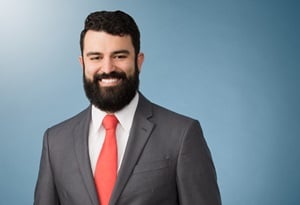Name, Image and Likeness Scouting Report: Throw Out the Old Playbook
The 2021 college football season is upon us and, for the first time, college athletes in all sports can exercise their publicity rights — commonly referred to as “name, image and likeness” (NIL) — without sacrificing their NCAA eligibility. Athletes now have more to be concerned with than academic and athletic performance. For the first time ever, they can evaluate their prospects to make money on everything from product endorsements to personal appearances to selling autographs. They can now legitimately aspire to cultivate, build and capitalize on their own individual brands. And they do not have to do this all by themselves — they can now work with “professional service providers” (including agents) to help them maximize their NIL opportunities.
The legal implications for businesses and college athletes participating in the NIL arena is — and will be — fluid. Nearly two dozen states have adopted laws providing some structure to the NIL playing field; however, many of these are inconsistent in their approaches, and certain state laws may limit athletes’ ability to exercise their rights. How these laws and regulations evolve in their handling of NIL ventures, and the opportunities of businesses that seek to integrate athletes’ NIL into their own advertising and promotional plans, will play a critical role in shaping this burgeoning marketplace.
Meanwhile, individual athletic conferences and member-school athletic departments are seeking recruiting advantages by rushing to adopt user-friendly NIL policies designed to aid their student-athletes in navigating this new landscape. These programs vary dramatically from school to school, even within the same conference. For example, the University of Iowa — despite touting its FLIGHT program — has done little beyond offering a third party’s program to help athletes manage their social media presence. Meanwhile, Big Ten conference rival and perennial football power the Ohio State University has prepared a comprehensive set of guidelines to help its athletes make the most of these new opportunities — and avoid pitfalls while doing so.
Ultimately, businesses’ opportunities to partner with college athletes in NIL marketing plans will depend upon the policies of the conference in which the athlete competes, the individual state laws where the school is located and, of course, the policies of the school attended. In short, this will be a complex playbook for everyone involved.
We are here to help you navigate this new playing field. We have extensive experience working with NIL issues before this sea change and in this new era. While guidance and approaches from the previous NIL regime remain applicable to today’s, the new season’s legal issues are more complex and nuanced.
Join us as we celebrate the return of a full 2021 fall athletics season with information that will help your business win on the NIL playing field.
This should be fun.
The material contained in this communication is informational, general in nature and does not constitute legal advice. The material contained in this communication should not be relied upon or used without consulting a lawyer to consider your specific circumstances. This communication was published on the date specified and may not include any changes in the topics, laws, rules or regulations covered. Receipt of this communication does not establish an attorney-client relationship. In some jurisdictions, this communication may be considered attorney advertising.



